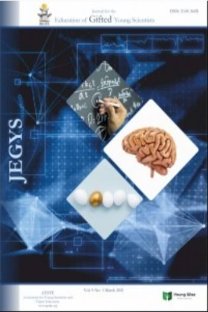Developing and Implementing School for Highly Gifted, Exceptionally Gifted, and Profoundly Gifted Students: An Interview with Lynette BreedLove
According to research, while moderately gifted students can often fit in the regular classrooms with differentiated instructions, pull-out programs, or acceleration options, highly gifted students do better when they are grouped with other intellectually-advanced peers in accordance with their strengths, interests, and background knowledge of a topic. Each of these students requires special attention and management strategies to develop better cognitive, social, emotional, and physical skills. Thanks to the grouping strategy, highly gifted students can study concepts at the appropriate pace, depth, and complexity so that these students feel valued and normal (Neville, 2007; Rogers, 2007). In order to fully meet these students’ needs, creating a school for highly, exceptionally, and profoundly gifted students would be a more beneficial plan compared to requiring them to stay within the regular classroom, accelerating, or grade skipping. Rogers (2002) pointed out that these students showed more academic growth by studying with other intellectual peers in separate classrooms. According to VanTassel-Baska (2006), identification, curriculum, program design, staff development, parental involvement assessment, and evaluation areas were essential for gifted program development. In accordance with the program development guidelines noted above, in this presentation, the process of developing and implementing a program for highly gifted students in Science, Math, Reading, and Social Studies will be provided based on an interview with Lynette Breedlove, Ph.D. who is the director of Advanced Academic Studies & Secondary Counseling at Spring Branch Independent School District in Houston, TX.
Keywords:
highly gifted students, identification, developing highly gifted school, differentiation, enrichment acceleration,
___
- Hollingworth, L. S. (1931). The child of very superior intelligence as a special problem in social adjustment. Mental Hygiene, 15(1), 3-16.
- Neville, Christine S. “Of Importance, Meaning, and Success: Application for Highly and Profoundly Gifted Students.” High IQ Kids: Collected Insights, Information, and Personal Stories from the Experts. Ed. Kiesa Kay, Deborah Robson, and Judy Fort Brenneman. Minneapolis: Free Spirit Publishing, Inc., 2007. 161-177. Print.
- Rogers, Karen B. Re-Forming Gifted Education: How Parents and Teachers Can Match the Program to the Child. Scottsdale: Great Potential Press, Inc., 2002. Print.
- Rogers, Karen B. “What Makes the Highly Gifted Child Qualitatively Different? Implications for Schooling.” High IQ Kids: Collected Insights, Information, and Personal Stories from the Experts. Ed. Kiesa Kay, Deborah Robson, and Judy Fort Brenneman. Minneapolis: Free Spirit Publishing, Inc., 2007. 90-100. Print.
- Terman, L. M., & Oden, M. H. (1947). The gifted group at midlimb: Volume 5: Genetic studies of genius. Stanford, CA: Stanford University Press.
- VanTassel-Baska, J. (2006). A content analysis of evaluation findings across 20 gifted programs: A clarion call for enhanced gifted program development. Gifted Child Quarterly, 50(3), 199-215.
- Başlangıç: 2013
- Yayıncı: Genç Bilge Yayıncılık
Sayıdaki Diğer Makaleler
